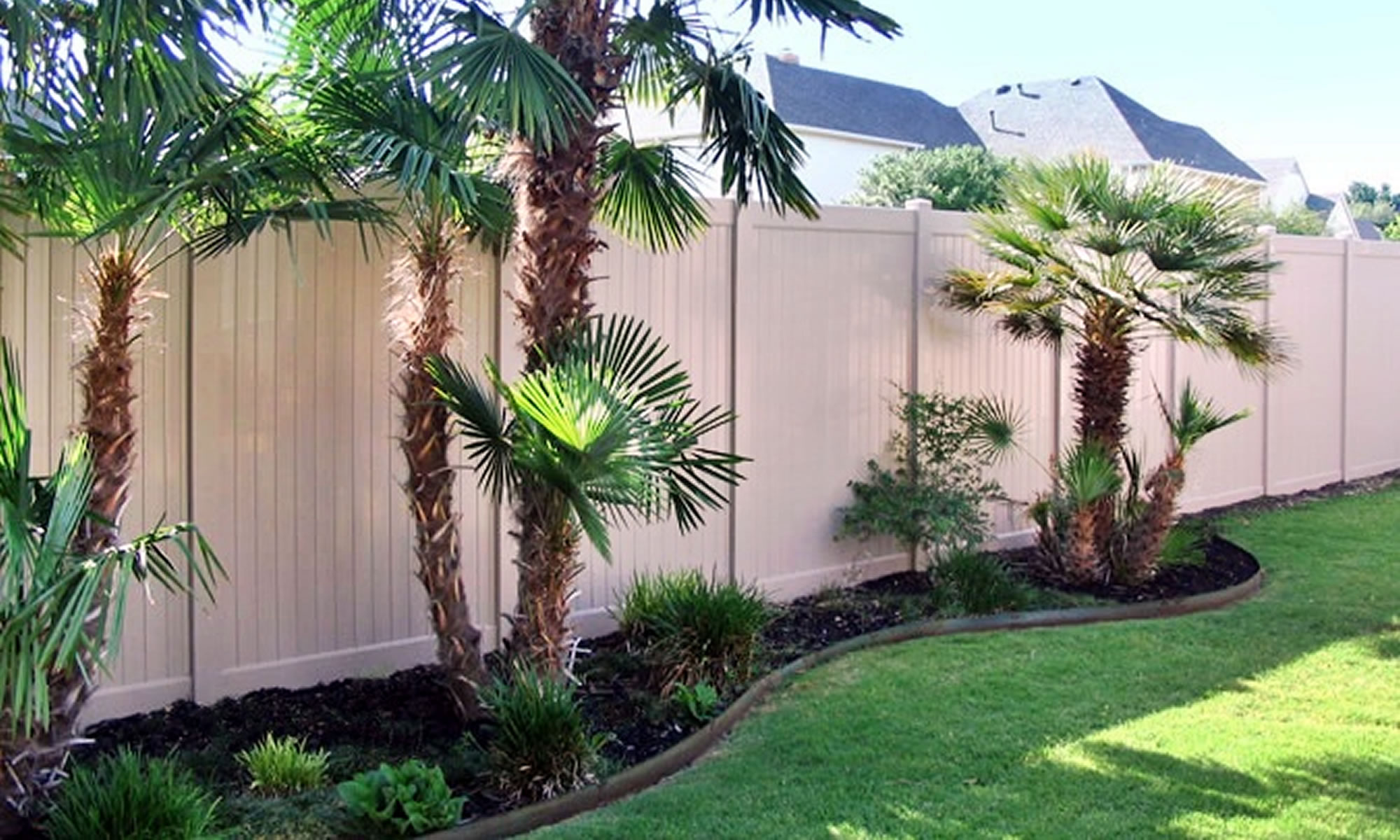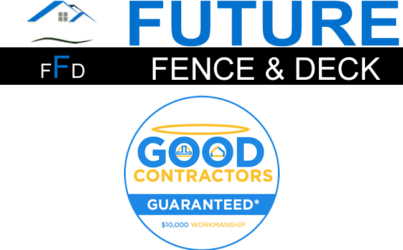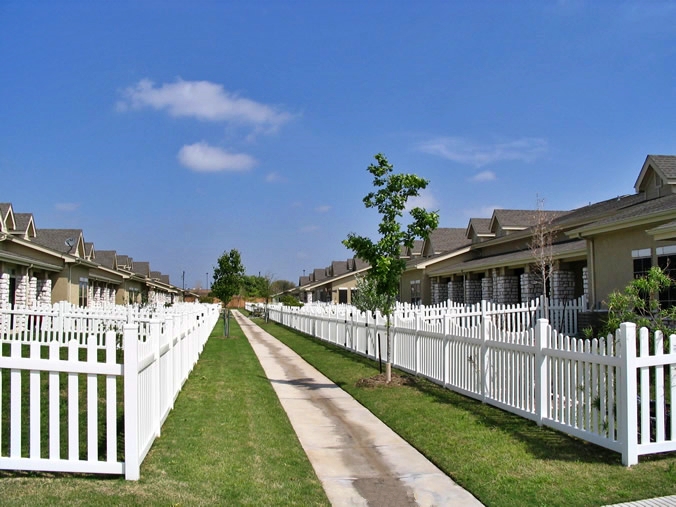Wood, Vinyl, Aluminum, Steel, and Wrought Iron
When talking about fence materials, there are lots of choices, each with their own unique qualities. Whether you’re aiming for a rustic charm, a more modern appearance, or security, selecting the best materials for your fence is important. In this post, we dive into the advantages and disadvantages of five popular options – wood, vinyl, aluminum, steel, and wrought iron. Read about each to learn which would best suit your needs!
Wood
Pros
- Aesthetically pleasing with its classic and natural look.
- Offers privacy depending on the style you choose.
- Cost can vary depending on the style you choose and the type of wood, however, it is generally less expensive.
- Lastly, they are considered to be eco-friendly since they emit lower levels of carbon emissions than other materials and is organic and biodegradable.
Cons
- It is vulnerable to decomposition, can produce fungus and dry rot, and attracts termites.
- It has a tendency to warp, although upkeep can help counter it.
- Needs regular cleaning with a pressure washer or garden hose, a bi-yearly repaint, and a re-stain every five years with the occasional board or plank replacement.
- Average lifespan is about 20 years.
Vinyl
Pros
- It’s durable and sturdy.
- Regardless of temperature changes, it shouldn’t expand or contract since it only reacts to extreme heat or cold. Because of this, it possesses fire retardant and water resistant qualities.
- Comes in a variety of colors, styles, and can replicate materials like stone, brick, or wood.
- Low and easy maintenance, usually consisting of a light scrubbing or hose down to clean any dirty areas. Read this article to learn more about Vinyl Fence Maintenance.
- Safety: vinyl fences don’t get scalding hot in the summer sun like an aluminum fence or splinters like a wooden fence.
Cons
- It’s not easily customizable beyond their original form. If you want to apply a different paint or stain in the future, you don’t have any long-term options other than installing a new fence.
- They are more expensive upfront yet are still the most cost-effective solution in the long run.
- If repairs are necessary, it’s typical to have to replace a whole section if one part needs replacement.
Aluminum
Pros
- Collects less rust than other kinds of fence materials.
- Is lightweight which makes it easy to install and move around.
- It’s low maintenance as it doesn’t require staining, painting, or sealing. It only requires a couple of simple cleanings.
- Aluminum comes in many different styles and colors.
- Is decently affordable, being less expensive than wrought iron or steel but a little more expensive than wood or vinyl. However, you may save money in the long run since it is low maintenance.
- Lastly, it is environmentally friendly and recyclable.
Cons
- Aluminum may not be the best option if the goal is security. Compared to materials like steel, it’s lighter and less sturdy. This might only be a concern if you’re dealing with large animals or the possibility of intruders.
- Aluminum is not ideal for privacy purposes since its traditional design is bars or rails with wide gaps. However, advancements in manufacturing make privacy options possible at a higher cost.
Galvanized Steel
Pros
- Known for their exceptional durability and strength, steel fences are designed to withstand time and harsh weather conditions.
- They have a protective coating which helps make them rust-resistant.
- A great benefit of steel fences is their ability to provide protection which is a primary reason they are chosen for security needs.
- They have little maintenance requirements. Other than the occasional cleaning, it doesn’t need regular painting, sealing, or staining to maintain their appearance and structural integrity.
- Its long-term cost is relatively low.
Cons
- Upfront costs are usually higher than other materials.
- Although it’s coated in a protective layer, this tends to wear off over time which can lead to rusting.
- It has a limited range of color options since it can’t be easily painted or stained, it’s typically a silver or gray color.
- It is difficult to modify or repair and it can be costly to do so.
- Requires a significant amount of energy to manufacture which produces carbon emissions.
- Its protective coating poses disposal and recycling challenges.
Wrought Iron
Pros
- It is exceptionally strong and possesses a long life span.
- Additionally, it is a beautiful material and develops a patina over time from oxidation, which many people appreciate.
Cons
- Heavy and difficult to handle so it is advisable to use professionals for its installation.
- Wrought iron is an expensive material.
- Although it is a great option to provide security, it isn’t the best choice to suit privacy needs.
- True wrought iron requires a considerable amount of maintenance to prevent rust and corrosion. The best course of action is to frequently inspect, clean, and paint it when necessary.
After reading this article, you now know the pros and cons of some popular choices for fence materials. In summary, there is a wide selection to choose from and picking the best one depends on the individual project. No matter the size, style, or budget; there’s a fence for you!
References
Joseph, M. (2022). Pros and Cons of Wood Fencing, Fencing, LawnStarter.
Joseph, M. (2023) Pros and Cons of Vinyl Fences, Vinyl Fences, FenceGnome.
MMC Fencing & Railing, (2016). Pros and cons of fencing materials, MMC Vinyl-Aluminum; Fencing & Railing.
Rohan, C. (2022) Aluminum Fencing Pros & Cons to Consider Before You Buy, DreamOutdoorLiving.


